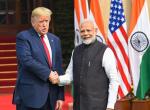Introduction
India and Japan are culturally linked from the 6th century due to the introduction of Buddhism into the country. The link has strengthened relations over the years leading currently to strategic links. The current friendship can be traced back to the visit of Japanese Prime Minister Mori in August 2000. This was followed by the visit of Prime Minister Kozumi in April 2005. During the visit a Joint Statement was signed which included Strategic Orientation of Japan-India Global Partnership. Japanese Prime Minister Shinzo Abe has been a strong proponent of strategic relations between the two countries and this was demonstrated during the visit of Prime Minister Modi to Japan in September 2014 when both countries decided to further strengthen their relationship. The Japanese Defence Minister during his visit to India in January last year had agreed to strengthen defence cooperation as stated below:-
- High level mutual visits on an annual basis.
- Hold 2+2 dialogue (Foreign and Defence Secretary) and Annual Defence dialogue between Defence Minsters.
- Promote exchanges on UN peacekeeping operations.
- Conduct bilateral exercises between the two Navies.
- Conduct expert exchanges in Disaster Relief and Counter Terrorism between the two Armies.
- Enhance cooperation on defence equipment and technology.
- Conduct staff talks, professional exchanges of test pilots and transport squadrons between two Air Forces.
The Raksha Mantri Shri Manohar Parrikar undertook his maiden Foreign Visit to Japan from 29 March to 01 April as a part of the Annual Defence Dialogue.
Issues Meriting Importance
The visit was given a lot of importance by both sides. The Raksha Mantri apart from meeting the Japanese Defence Minister General Nakatani interacted with the Japanese Prime Minister Shinzo Abe, Foreign Minister Fumio Kishida and also visited Japanese Self Defence warship Izumo. The Izumo is the largest warship in Japan and is a submarine hunter which can host seven anti submarine patrol helicopters, plus two rescue and transport helicopters. The Japanese demonstrated their friendliness by taking the Raksha Mantri on board the ship. Further discussions went well beyond the set boundaries and focussed on bilateral interests of the two countries in the South China Sea and Indian Ocean. The famous American Admiral Mahan stated that the country that controls the
Sea controls the world. It is in this regard that the sharing of maritime awareness between the two countries becomes extremely important.
The major issues decided were as under:-
- India and Japan feel there is a need to intensify bilateral ties in the defence and security fields. This is to be considered in particular for the maritime sector in the Indo-Pacific region. The Raksha Mantri had no hesitation to reiterate and reaffirm India’s position that it attaches great importance to its relations with Japan. Further, Japan is a privileged partner in the ‘Make in India’ initiative particularly in the defence technology sector.
- Prime Minister Shinzo Abe after meeting the Raksha Mantri, stated that a strong India-Japan partnership was not only in the national interest of the two countries but also important for peace and security in the region.
- Both countries would continue to exchange of visits at all levels to understand the nuances of each other leading to greater synergy in dealing with problems in the region. India has already invited Japan to participate in Exercise Malabar with the United States and India.
- Enhance discussions on future cooperation in defence equipment and technology.
- It is pertinent to note that the Raksha Mantri’s visit came at a time when Japan was set to introduce a new legislation in the Diet for amending its Constitution with regard to national security and military perspective. With India as a partner Japan’s new role of its Self Defence Forces would ensure greater security to Asia Pacific.
The Indian delegation also focussed on areas of defence acquisitions. Two areas which stand out are the US 2 amphibian aircraft and the Soryu class diesel submarine. The Japanese are keen to assist India with these products and transfer technology. The process has begun and deliberate discussions will see Japan helping us not only in these areas but possibly in the manufacture of engines for land systems, Unmanned Aerial Vehicles and in other areas.
Way Ahead
Japan and India have shared concerns about the direction which a rising China might take in future. While Japan has maritime disputes and the emotional aspects of the Second World War, India has an unresolved land border, the aspect of China providing assistance to Pakistan in manufacturing nuclear weapons as also Chinese warships making their forays in the Indian Ocean region, of late, have been of causing concerns to new Delhi. China is modernising its forces rapidly and has enhanced its capability to wage war exponentially. Improving their deterrence capabilities would help provide balance in the emerging strategic dynamics in the region and thus would contribute to peace and stability in the region. It is in the interest of both India and Japan that they cooperate in the fields of technology, defence and security.
India needs technological assistance from Japan to modernise her Armed Forces. India to be able to meet the challenges of modernisation of its defence forces should be able to manufacture weapons and equipment indigenously. Currently, her pace of modernisation is slow despite being the biggest importer of defence equipment in the world. To manufacture tanks, guns, frigates, destroyers, submarines, fighter jets, transport aircrafts, helicopters, Unmanned Aerial Vehicles and nuclear reactors India needs technology. Japan has state of the art technology and can assist India in all these fields. The most important defence equipment is an engine which is extremely difficult to design, develop and manufacture in India. Japan produces state of the art engines, high-end technology and other critical equipment which would be needed by India to improve its capabilities in all the five dimensions of warfare which comprise Land, Water, Air, Outer Space and Cyber domain.
It is pertinent to note that currently the Japanese Self Defence Force which though being qualitatively very capable yet it might be lacking numbers to meet all its obligations and undertake operations to protect its maritime assets in its areas of interest. The Japanese also remain heavily depend on the United States for its strategic requirements. With the current intervention fatigue being faced by Western nations, Japanese Government is rightly considering undertaking a Constitutional Amendment to enhance the size of her Self Defence Force to meet the visualised threats. Next decade or so would be crucial for both Japan and India for modernising their defence forces in order to meet the likely challenges to their security.
The visit of our Raksha Mantri to Japan has strengthened our strategic relations and would pave the way for greater cooperation in the fields of security and strategy between our countries.
Published Date: 8th April 2015, Image source: http://www.deccanchronicle.com










Post new comment